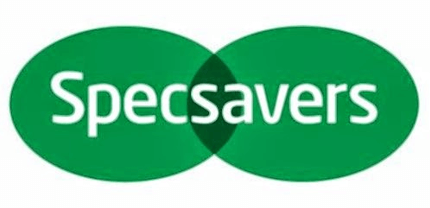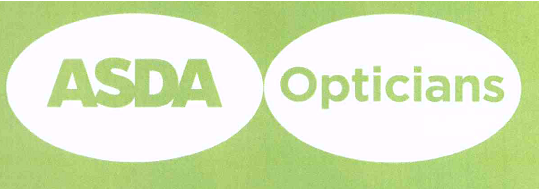Genuine Use of Figurative Marks and Significance of Colour in Infringement Proceedings
The Court of Justice of the European Union (CJEU) has recently issued its decision in response to a reference from the English Court of Appeal. In Case C-252/12, 18 July 2013, Specsavers International Healthcare Ltd, Specsavers BV, Specsavers Optical Group Ltd, Specsavers Optical Superstores Ltd v Asda Stores Ltd, the CJEU held that a figurative mark is put to genuine use where a word mark is superimposed over it, provided that the distinctive character of the figurative mark remains intact. The CJEU has also held that where a figurative mark is registered in black and white, but has been used in a colour by which a significant proportion of the public have come to recognise the mark, this form of use will be a relevant factor in assessing infringement where a third party adopts the same or a similar colour.
Background
Specsavers is the largest chain of opticians in the United Kingdom and trades under the following corporate logo:

In 2009 ASDA, a leading UK supermarket chain, launched an advertising campaign for optical goods which specifically targeted Specsavers. In the context of that campaign, Asda used the slogans “Be a real spec saver at ASDA “ and “Spec savings at ASDA” and the following logo:

Specsavers brought proceedings against ASDA in the English High Court, alleging infringement of a number of its Community Trade Marks (CTMs), including the following two black and white figurative marks:

The High Court dismissed Specsavers’ claim, held that ASDA had not infringed its CTMs and revoked Specsavers’ plain double oval logo (omitting the Specsavers word mark) for non-use. The Court of Appeal sought guidance from the CJEU on two issues, namely whether Specsavers’ use of the double oval logo overlaid with the Specsavers word mark constituted genuine use of Specsavers’ plain double oval logo (omitting the Specsavers word mark) and whether Specsavers’ use of the double oval logo in the colour green was relevant to Specsavers’ infringement claim.
CJEU Ruling
Genuine Use
The issue of genuine use of plain figurative marks has recently been addressed by the CJEU in Case C-12/12 Colloseum Holding AG v Levi Strauss & Co. In this case, the CJEU held that a registration for the famous Levi’s red tab, sewn into the seam of a jean pocket but absent the Levi’s word mark, was put into genuine use where that use included the Levi’s word mark on the red tab. The CJEU found that the condition of genuine use was met where the registration was used as part of a composite mark or in conjunction with another mark, provided that, as a result of that use, the relevant public perceived the registration as distinctive.
The superimposition of the word “Specsavers” over the double oval logo was found by the CJEU to change the form in which the mark was registered, by hiding parts of the double oval logo. This represented a departure from the “Levis” case, insofar as the use of the word “Specsavers” over the double oval logo was not deemed to constitute use as part of or in conjunction with the double oval logo. However, the
CJEU emphasised that even where the mark was used in a form which was different to that in which it was accepted for registration, that use could constitute genuine use of the registration where it did not alter its distinctive character. If the relevant public had come to recognise Specsavers’ plain double oval logo as an indication of trade origin absent the Specsavers word mark, the superimposition of the Specsavers word mark over the plain double oval logo would not be regarded as altering its distinctive character. This would be a question for the Court of Appeal to settle based on the evidence filed by Specsavers.
Relevance of Colour to Infringement Proceedings
Although Specsavers had registered its figurative marks in black and white, it had long used them in green. ASDA also used green in its logo marks. The CJEU held that the use of these colours by both parties should be taken into consideration to determine whether a risk of confusion existed between them and whether ASDA’s use of green could be held to take unfair advantage of the reputation which Specsavers claimed subsisted in the colour green, as used in their logo marks. The risk of confusion which ASDA’s use of the colour green posed to Specsavers would, however, need to be balanced against the association by the relevant public between ASDA and the shade of green which they used as part of their corporate “get up”.
Comment
This uncontroversial decision should strengthen the hand of trade mark owners in enforcing their trade “get up” against third parties. Where registrations for figurative marks, which have been used only in combination with word marks, have become sufficiently well recognised by consumers to act as designations of origin in their own right, they should meet the condition of genuine use. In addition, even where trade mark owners have only registered their logos in black and white, but have used them in a particular colour, it appears that they will be able to benefit from their recognition by the relevant public in the colour in which they are used. The case will now return to the English Court of Appeal, who are likely to rule that Specsavers’ double oval mark should not be revoked and who will then need to decide whether it has been infringed by ASDA.
On the basis of this ruling, clients may wish to consider registering their figurative brands absent the word marks with which they are used in commerce. To the extent that these figurative marks become recognised as indications of trade origin in their own right, they should satisfy the condition of genuine use and be capable of enforcement against a wider range of similar third party figurative marks. In spite of this ruling, we continue to recommend that clients register their figurative marks in the colour in which they are intended for use, rather than black and white.
